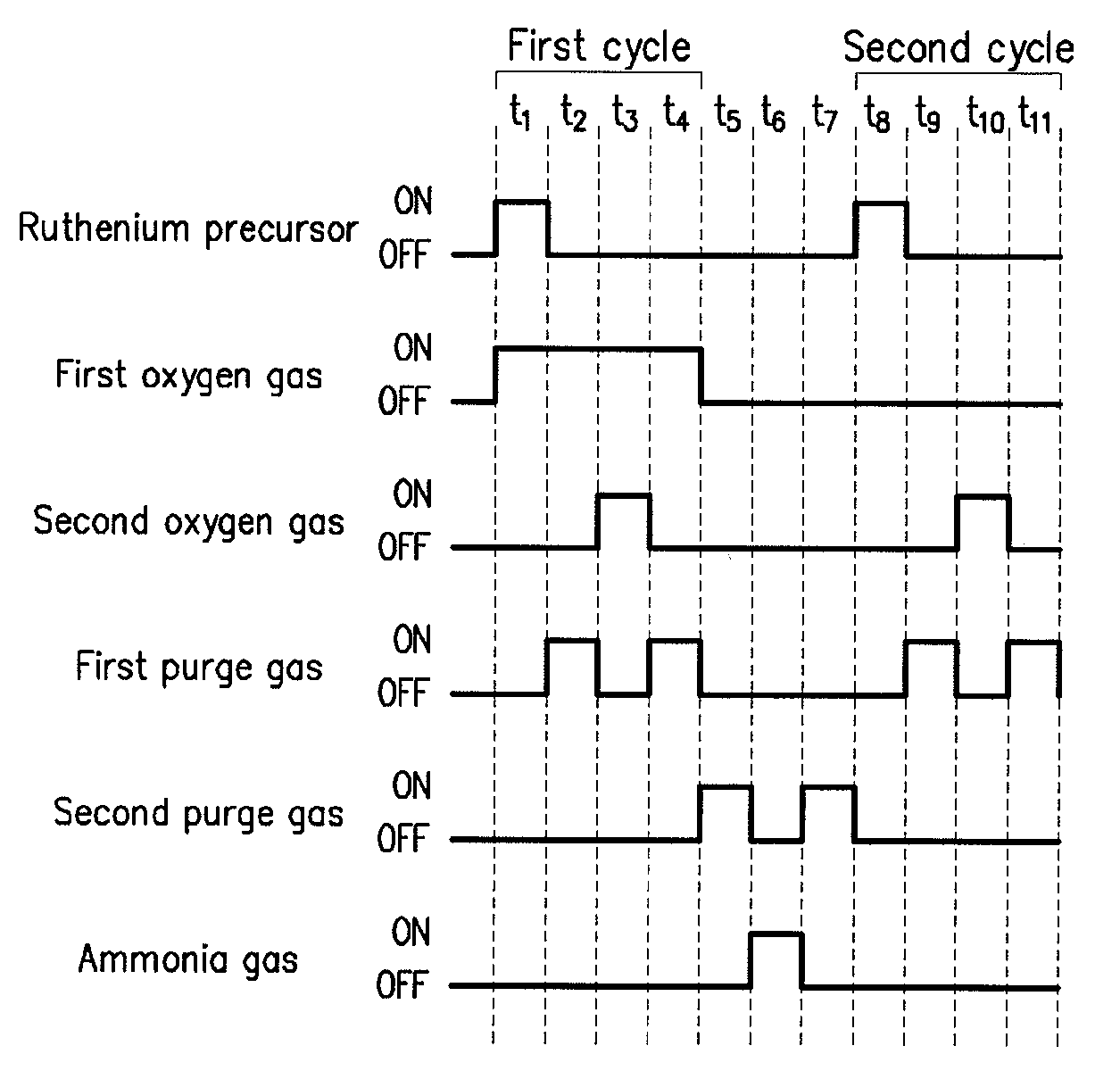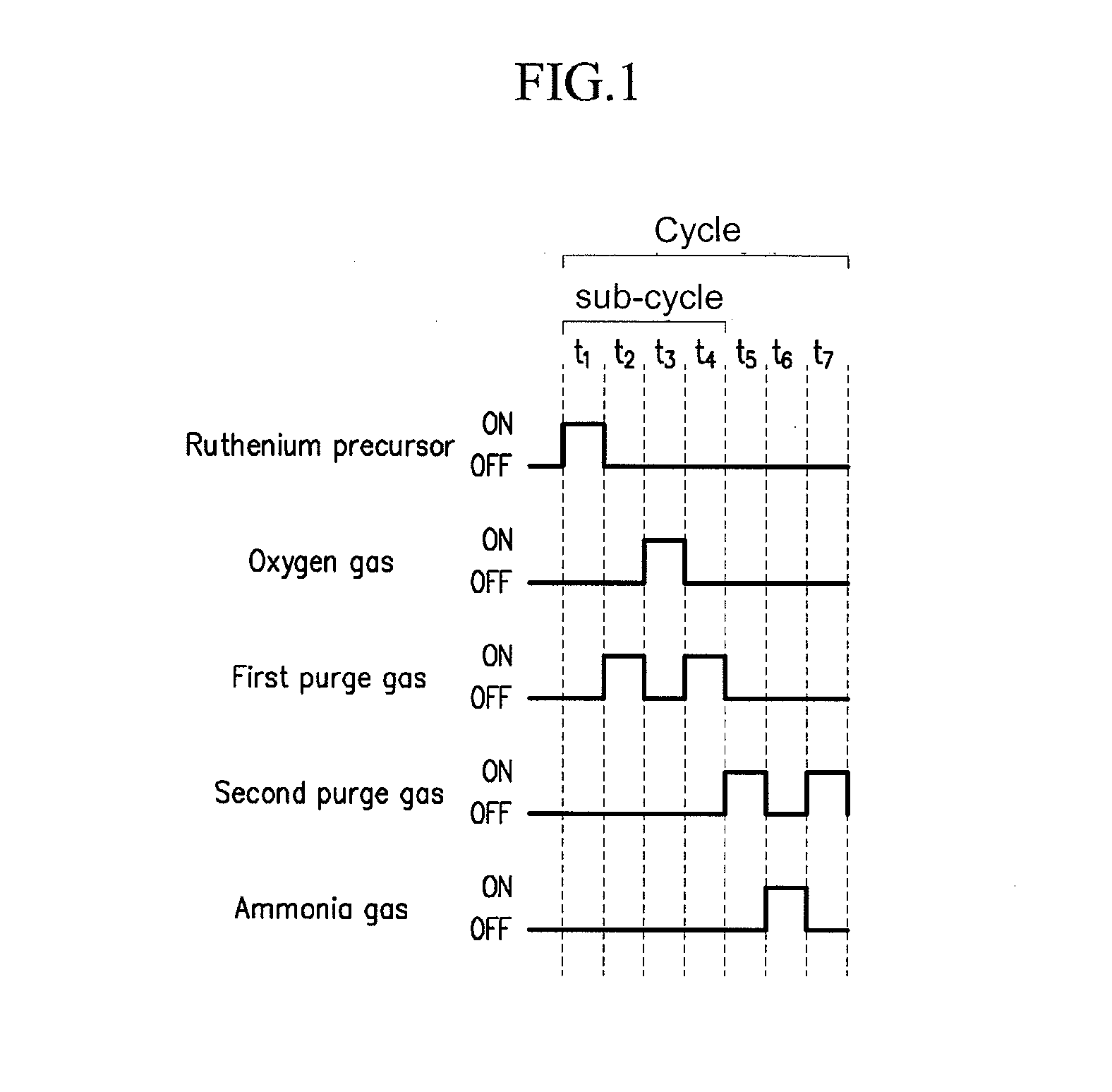Methods of depositing a ruthenium film
a technology of ruthenium film and substrate, which is applied in the direction of coating, chemical vapor deposition coating, capacitor, etc., can solve the problems of poor conformality of cvd, cvd, and the inability to provide multiple reactants at the same time,
- Summary
- Abstract
- Description
- Claims
- Application Information
AI Technical Summary
Benefits of technology
Problems solved by technology
Method used
Image
Examples
Embodiment Construction
[0017]The present invention will be described more fully hereinafter with reference to the accompanying drawings, in which exemplary embodiments are shown. As those skilled in the art would realize, the embodiments may be modified in various different ways, all without departing from the spirit or scope of the present invention.
[0018]When a ruthenium thin film is formed by a conventional ALD process, using oxygen gas (O2) as one of reactants, such a ruthenium film can have a relatively high density of, for example, about 12 g / cm2. However, when such a ruthenium film is formed on a layer having a high dielectric constant, such as for an integrated circuit upper electrode formed over a capacitor high k dielectric, the ruthenium film tends not to adhere to the underlying high dielectric layer. Accordingly, the ruthenium thin film may be detached from the underlying layer during a subsequent process, such as a heat treatment process.
[0019]In addition, a conventional ALD process may requ...
PUM
| Property | Measurement | Unit |
|---|---|---|
| time | aaaaa | aaaaa |
| temperature | aaaaa | aaaaa |
| thickness | aaaaa | aaaaa |
Abstract
Description
Claims
Application Information
 Login to View More
Login to View More - R&D
- Intellectual Property
- Life Sciences
- Materials
- Tech Scout
- Unparalleled Data Quality
- Higher Quality Content
- 60% Fewer Hallucinations
Browse by: Latest US Patents, China's latest patents, Technical Efficacy Thesaurus, Application Domain, Technology Topic, Popular Technical Reports.
© 2025 PatSnap. All rights reserved.Legal|Privacy policy|Modern Slavery Act Transparency Statement|Sitemap|About US| Contact US: help@patsnap.com



